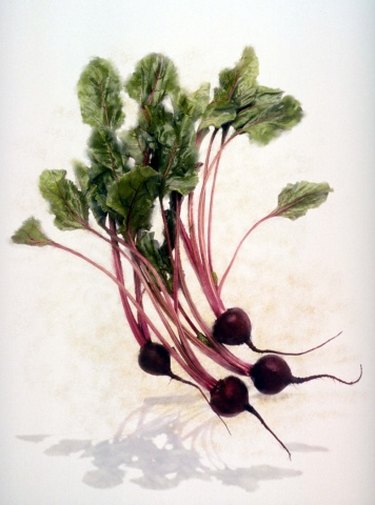
A root vegetable, beets are available all year long, but are at their best from June through October. Beets haven't always been the beloved vegetable they are today; for decades, they were an unglamorous yet inexpensive dish that most families could afford to put on the table. However, with their deep red color and sweet, earthy taste, these vegetables have become popular among chefs and home cooks alike.
Beet Season
Video of the Day
While root vegetables are traditionally fall crops, many varieties, including beets, also grow well during the spring. Beets are cool-weather crops and grow best when planted in the early spring for an early summer harvest or in the final months of summer for a fall harvest. So, look for them in June, September or October. They do not fare well in extreme cold or extreme heat.
Video of the Day
Where They Grow
Beets are grown from a seed and do best in fertile, deep and sandy soils, preferring to grow in areas where temperatures do not exceed 85 degrees. In the U.S., beets are grown in 31 states, with Texas, New Jersey, Ohio and California being the main producers.
Selecting and Storing
When selecting fresh beets, choose small- to medium-sized globes. Smaller beets will be more tender and more tasty than the larger ones. The globes should also be round and firm. Be sure to carefully examine the vegetable for spots or bruising. Fresh beets will have greens attached, which indicate the freshness of the vegetable. Do not buy beets with browning, wilted leaves. Before storing, trim the greens off the beets, leaving 1 to 2 inches of the stem. Beets will keep for up to 10 days when refrigerated, but they should be thrown away if they turn soft.
Preparing
Beets should be cooked whole and unpeeled; you should also be sure to trim the stem to 1 inch to minimize bleeding and flavor loss. Once they are tender from cooking they can be peeled and sliced, mashed or crushed. For a more intense flavor, roast the beets, being sure to cover a baking sheet with aluminum foil first to lessen your cleanup time. While working with beets, your hands, countertops or cutting boards can be stained by the dark red vegetable. To prevent your hands from being stained, slip on a pair of latex gloves before going to work.